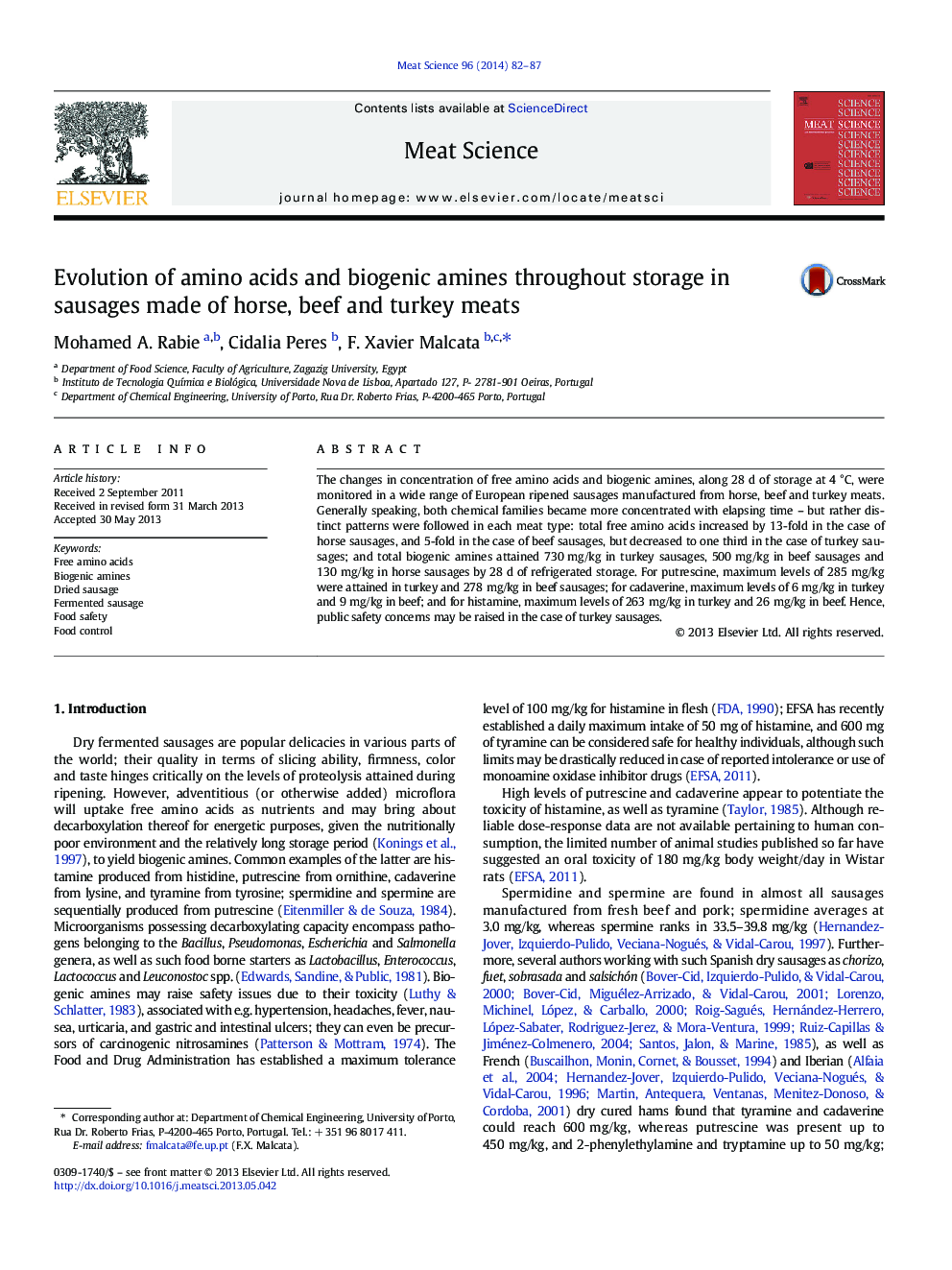| Article ID | Journal | Published Year | Pages | File Type |
|---|---|---|---|---|
| 5791384 | Meat Science | 2014 | 6 Pages |
â¢Total free amino acids and biogenic amines increase significantly during refrigerated storage of sausages.â¢Special care should be exercised regarding consumption of sausage manufactured from turkey.â¢Histamine in turkey sausage is a potential risk to susceptible consumers.
The changes in concentration of free amino acids and biogenic amines, along 28 d of storage at 4 °C, were monitored in a wide range of European ripened sausages manufactured from horse, beef and turkey meats. Generally speaking, both chemical families became more concentrated with elapsing time - but rather distinct patterns were followed in each meat type: total free amino acids increased by 13-fold in the case of horse sausages, and 5-fold in the case of beef sausages, but decreased to one third in the case of turkey sausages; and total biogenic amines attained 730 mg/kg in turkey sausages, 500 mg/kg in beef sausages and 130 mg/kg in horse sausages by 28 d of refrigerated storage. For putrescine, maximum levels of 285 mg/kg were attained in turkey and 278 mg/kg in beef sausages; for cadaverine, maximum levels of 6 mg/kg in turkey and 9 mg/kg in beef; and for histamine, maximum levels of 263 mg/kg in turkey and 26 mg/kg in beef. Hence, public safety concerns may be raised in the case of turkey sausages.
